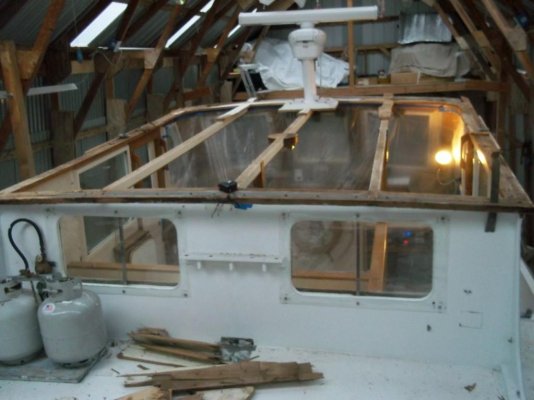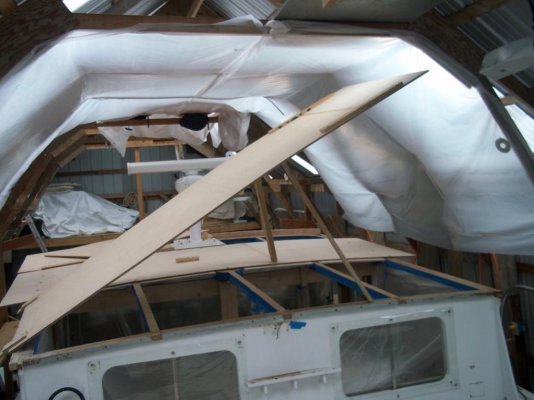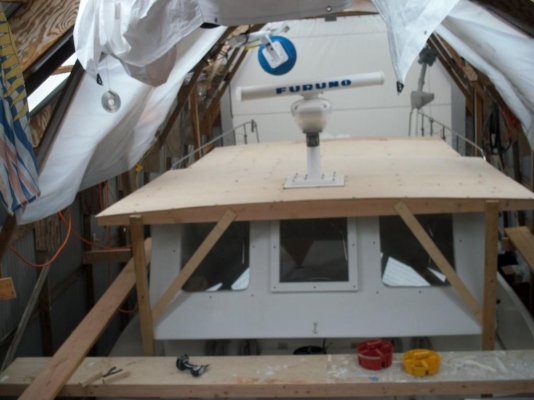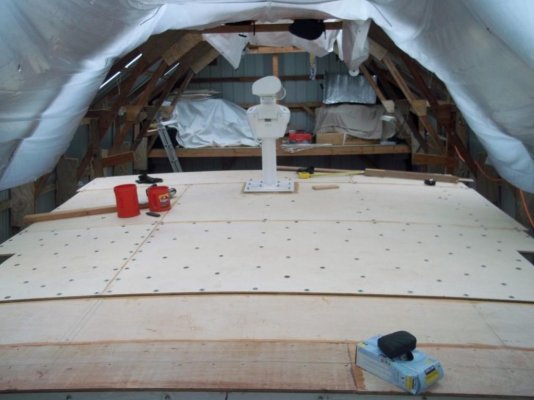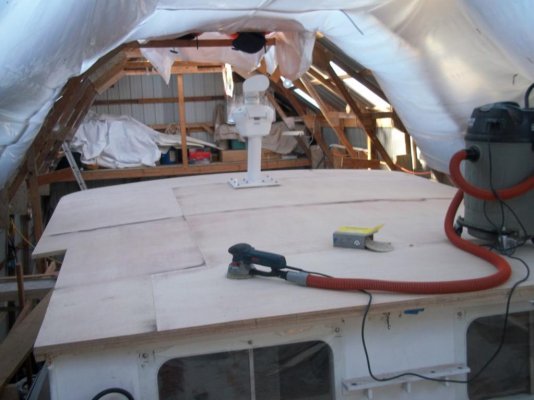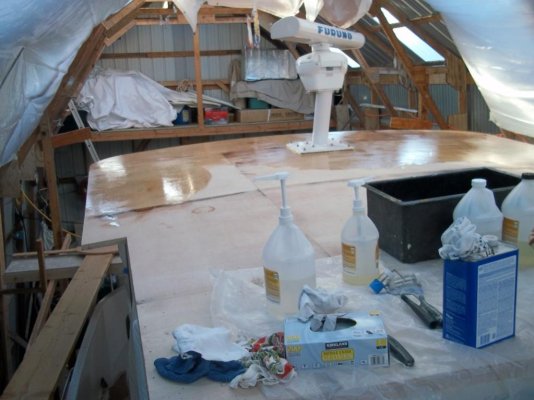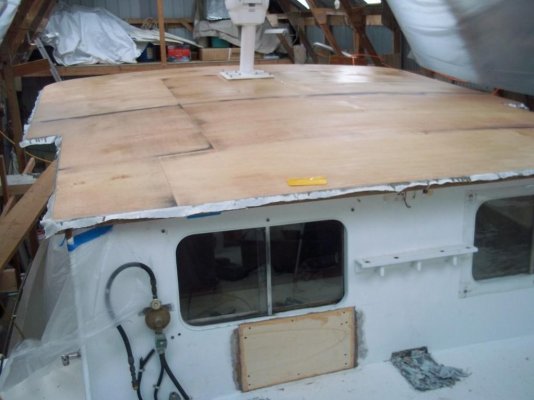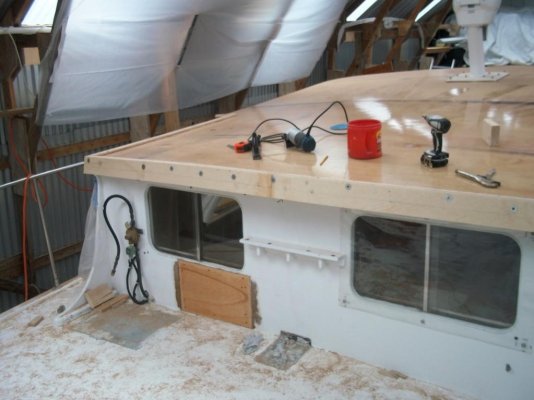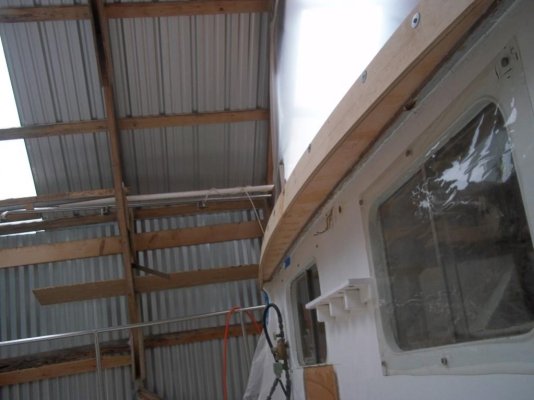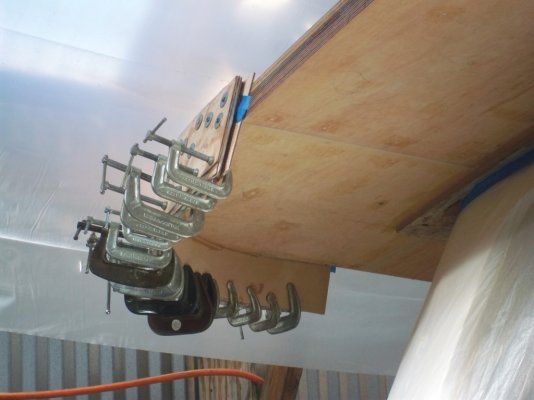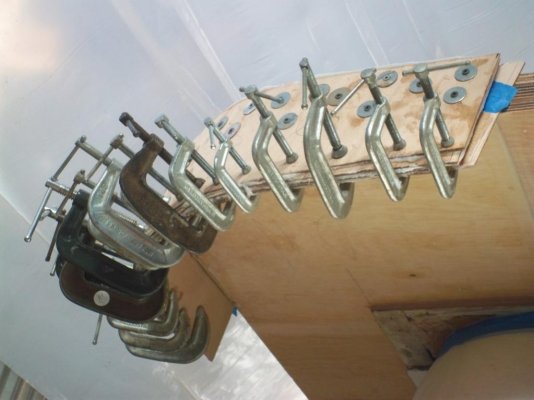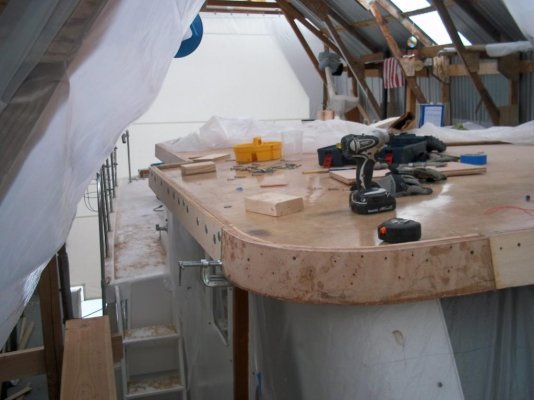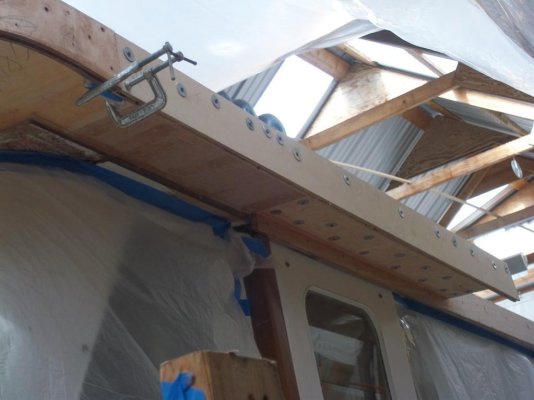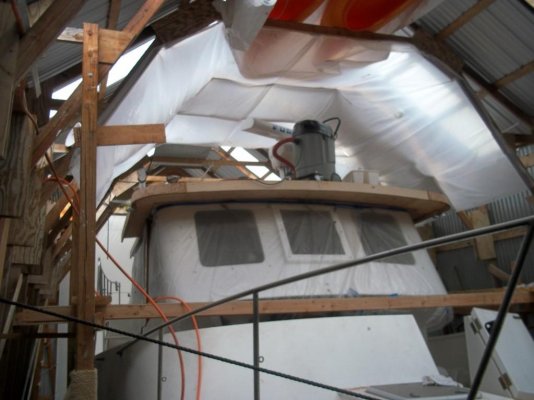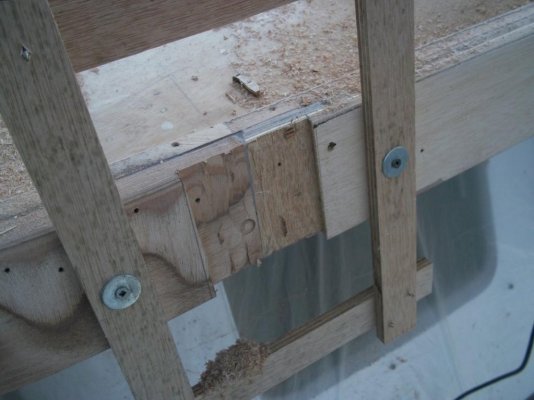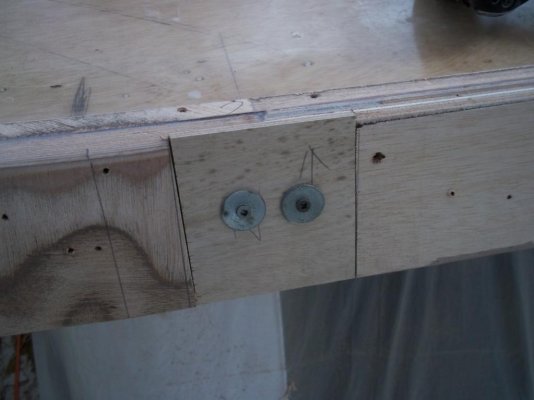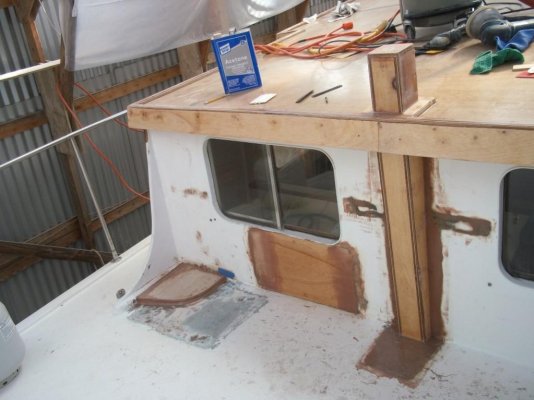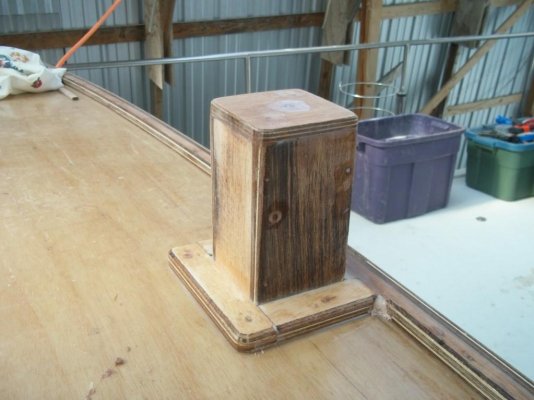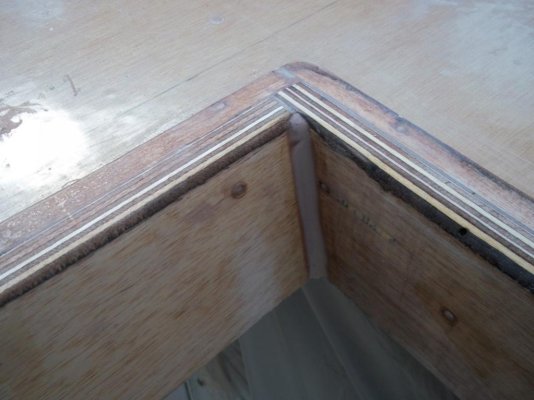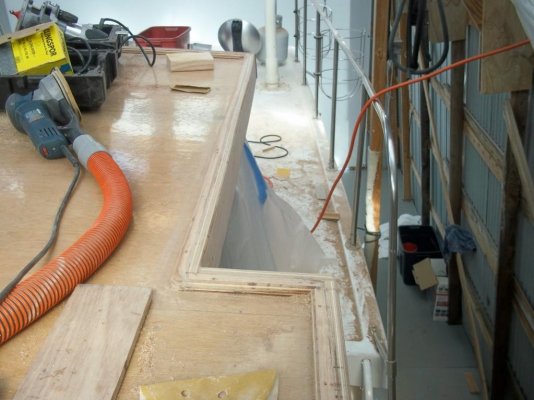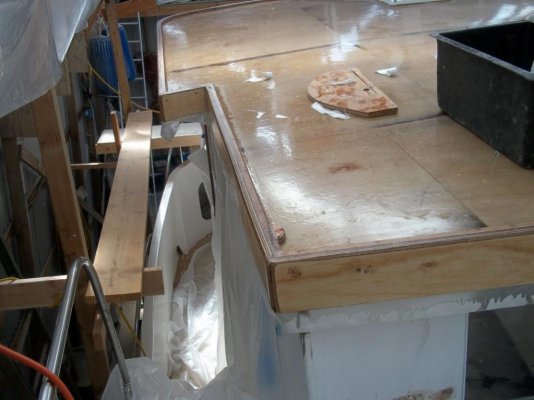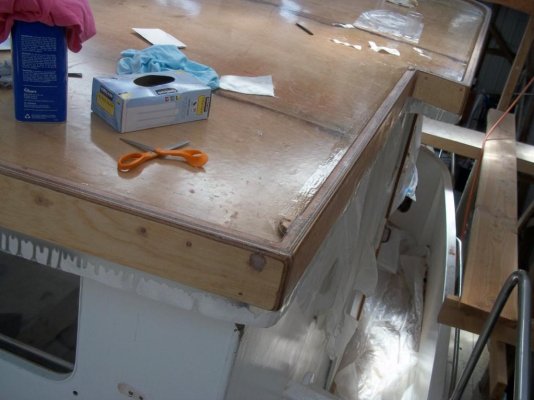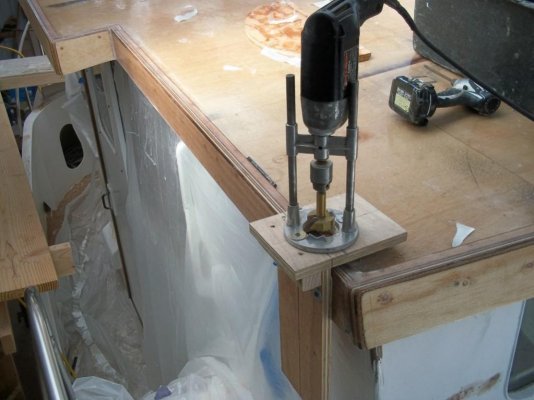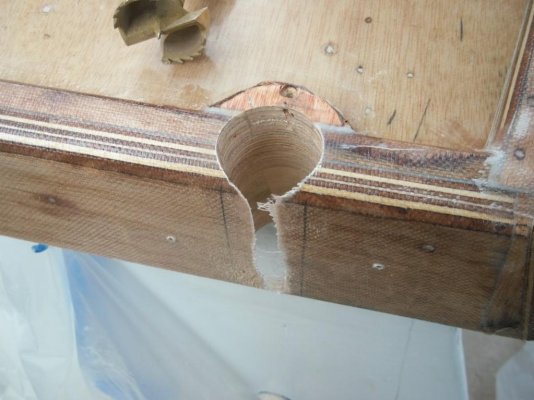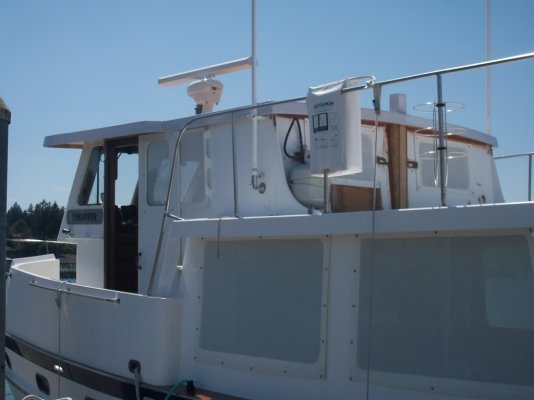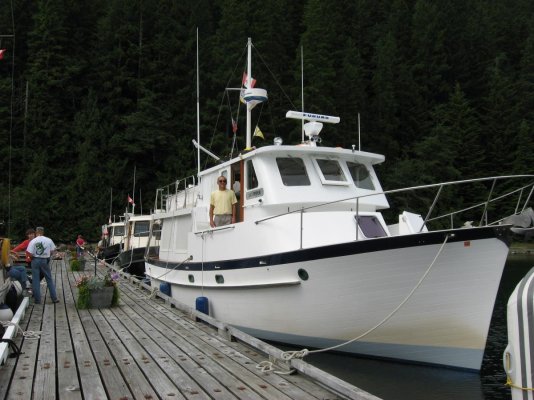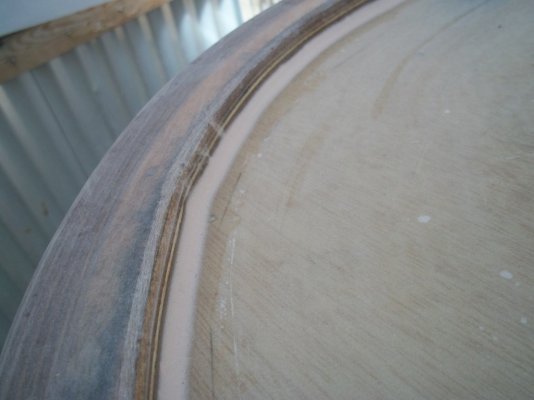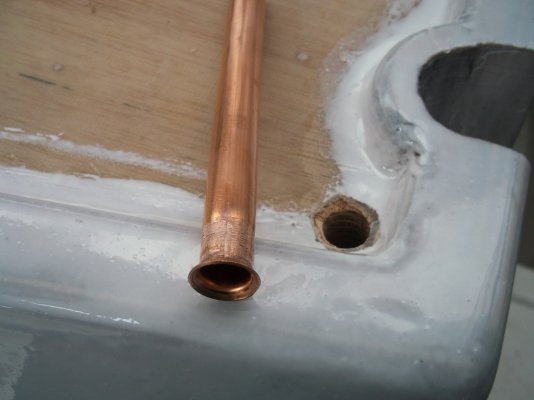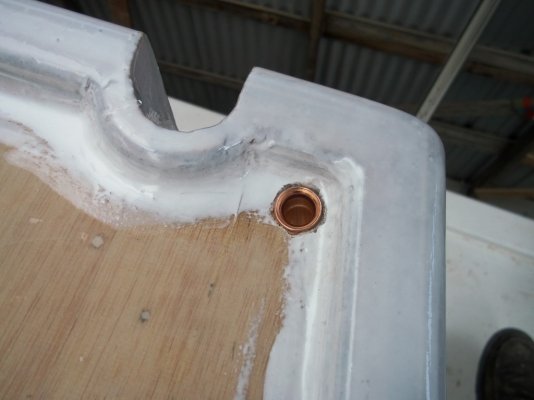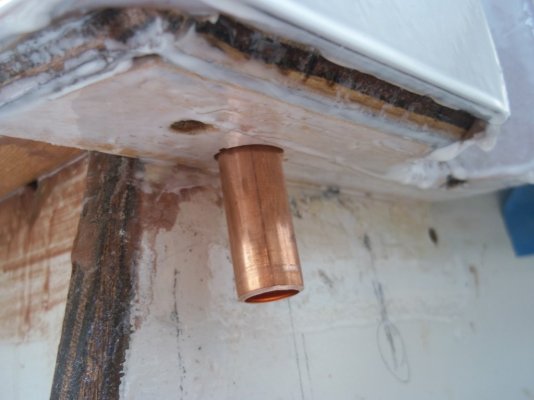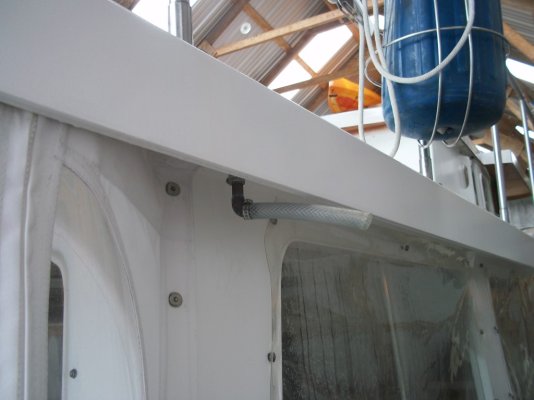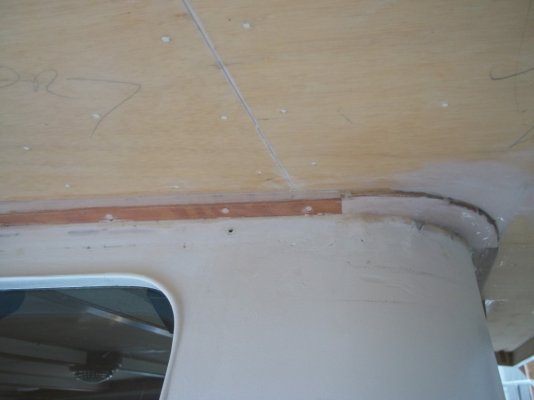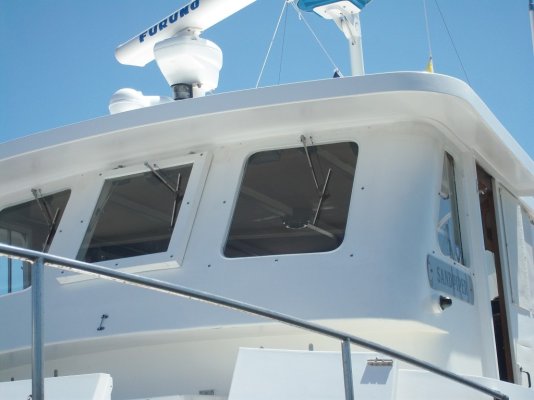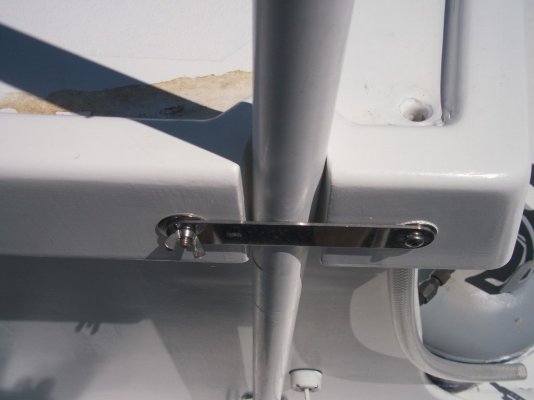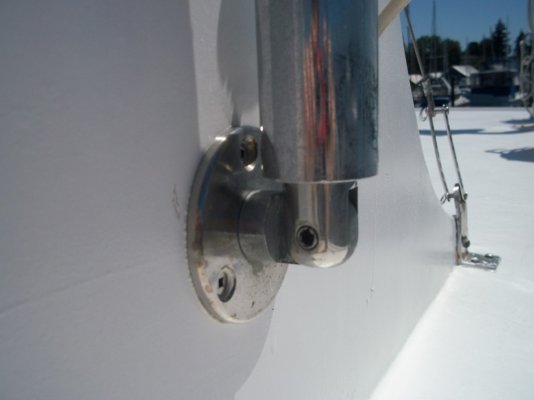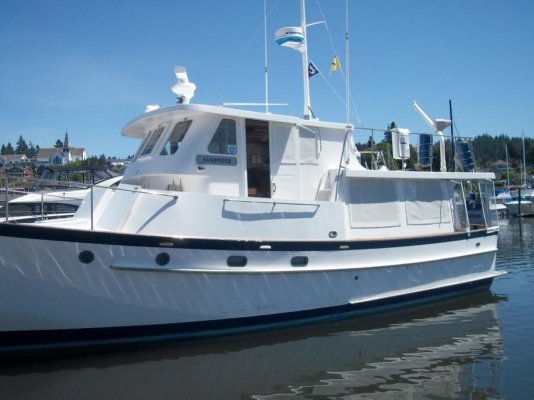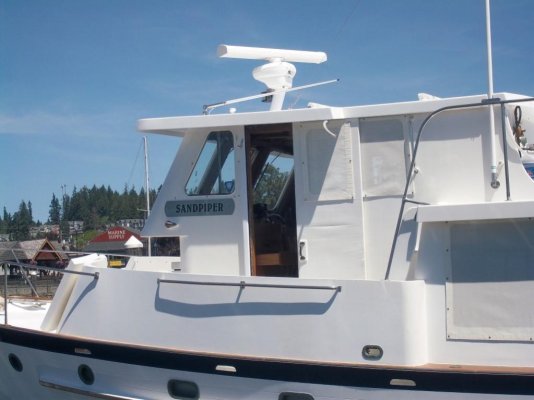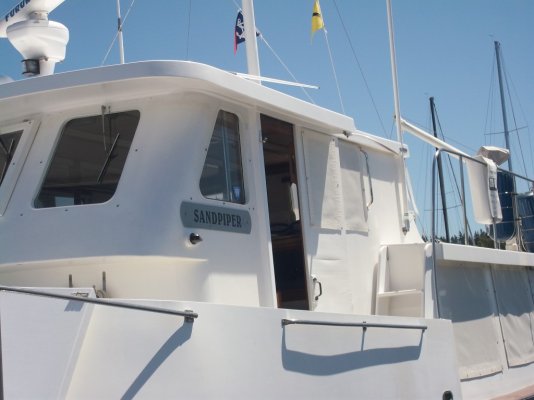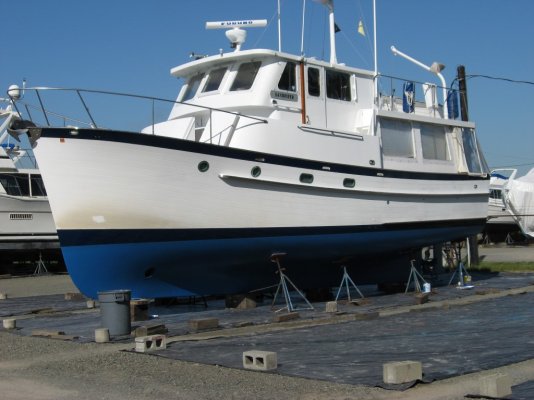- Joined
- Nov 8, 2012
- Messages
- 2,315
- Location
- USA
- Vessel Name
- Sandpiper
- Vessel Make
- Bluewater 40 Pilothouse Trawler
Here are pictures from my roof replacement project on a Bluewater 40 Pilothouse Trawler.
The roof was glass cloth set in polyester resin over mahogany plywood from the factory. The trim around the edges of the roof was made of solid mahogany, spliced together with butt joints. Water got into the roof and caused delamination of the glass cloth. Water in the trim caused constant cracking of the glass cloth.
The bad roof was pointed out by Matt Harris in the pre purchase survey in 2000 and the purchase price was adjusted to cover the repair. There were more urgent projects to tackle first so I've been patching it for around 18 years and the whole roof was pretty much one large patch.
Started the project in the fall of 2017, took a break during the summer of 2018 to go cruising, restarted the project in the fall of 2018 and am currently finishing it.
Old roof off. It was pretty simple removing the roof. The old roof was fastened with boat nails (ring shank) and no glue. Cut alongside beams to remove most of the roof and pried off the rest nailed to the beams. Left the radar mount in place since I had rebuilt that area years ago when the second radar was installed. Those roof beams are very springy without the plywood holding them in place so will need to add a temporary frame at midpoint.
The roof was glass cloth set in polyester resin over mahogany plywood from the factory. The trim around the edges of the roof was made of solid mahogany, spliced together with butt joints. Water got into the roof and caused delamination of the glass cloth. Water in the trim caused constant cracking of the glass cloth.
The bad roof was pointed out by Matt Harris in the pre purchase survey in 2000 and the purchase price was adjusted to cover the repair. There were more urgent projects to tackle first so I've been patching it for around 18 years and the whole roof was pretty much one large patch.
Started the project in the fall of 2017, took a break during the summer of 2018 to go cruising, restarted the project in the fall of 2018 and am currently finishing it.
Old roof off. It was pretty simple removing the roof. The old roof was fastened with boat nails (ring shank) and no glue. Cut alongside beams to remove most of the roof and pried off the rest nailed to the beams. Left the radar mount in place since I had rebuilt that area years ago when the second radar was installed. Those roof beams are very springy without the plywood holding them in place so will need to add a temporary frame at midpoint.
Attachments
Last edited:

